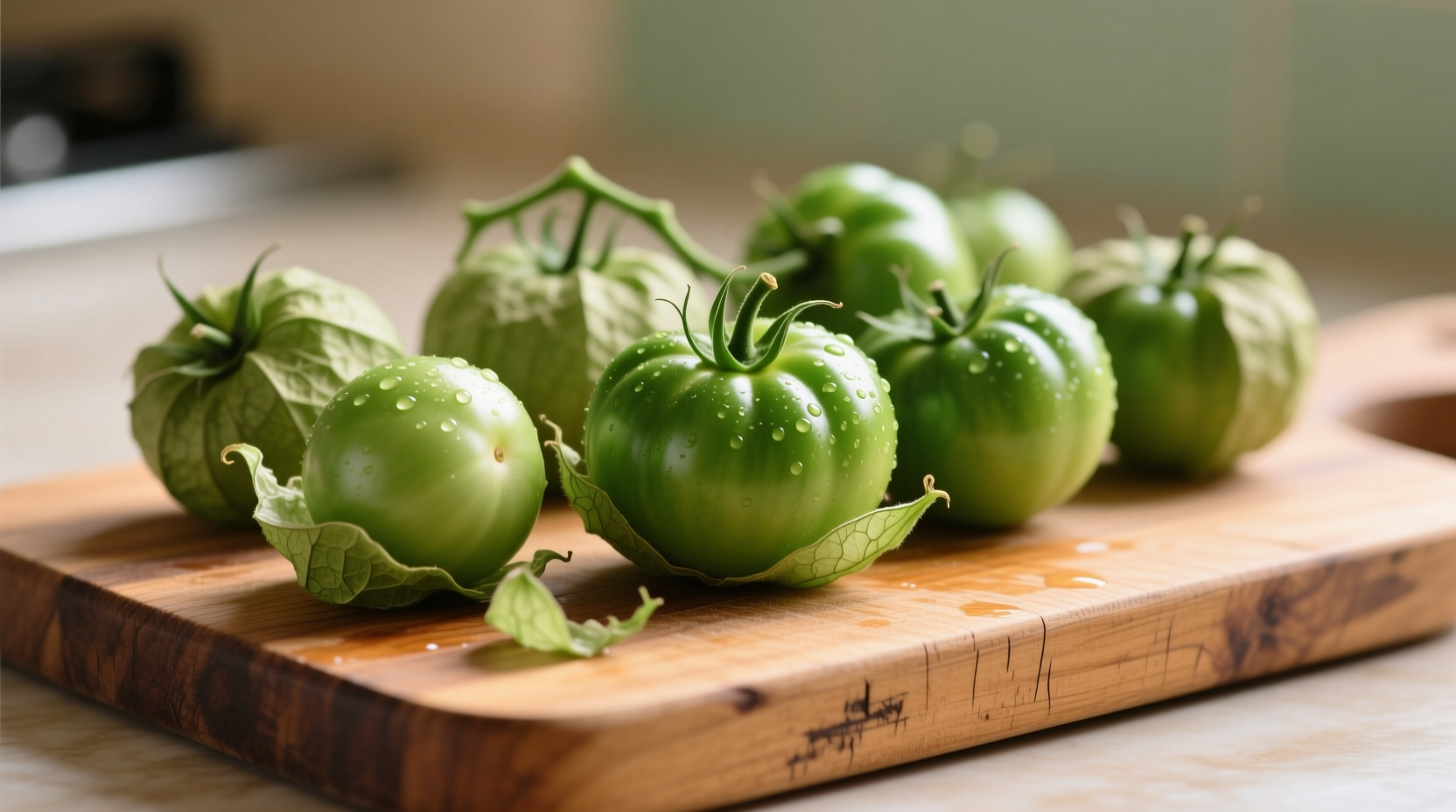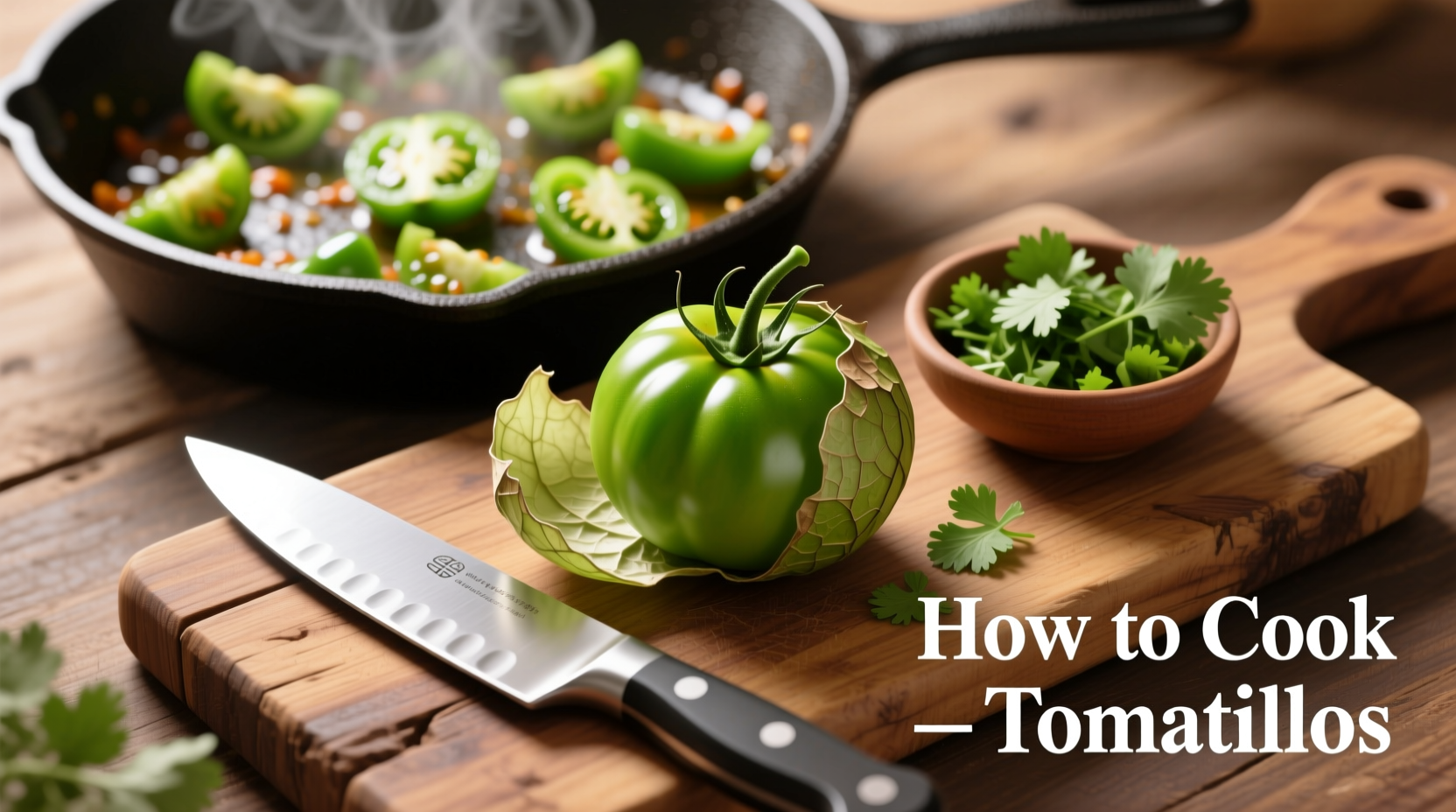Boil tomatillos for 10-12 minutes or roast at 400°F (200°C) for 15-20 minutes until husks loosen and skins wrinkle. Properly cooked tomatillos transform from tart and grassy to rich, complex, and slightly sweet—essential for authentic salsa verde and Mexican dishes.
Ever wondered why your salsa verde lacks that vibrant, restaurant-quality flavor? The secret lies in properly cooking tomatillos. These small, lantern-encased fruits (not vegetables!) form the backbone of Mexican cuisine but require specific preparation to unlock their full potential. As a Latin American cuisine specialist who's documented traditional tomatillo usage from Oaxacan markets to Puebla kitchens, I've seen how mastering this simple technique transforms ordinary dishes into authentic culinary experiences.
Understanding Tomatillos: More Than Just Green Tomatoes
Before we dive into cooking methods, let's clarify what makes tomatillos unique. Native to Mexico and Central America, these husked fruits (Physalis philadelphica) have been cultivated for over 3,000 years. Unlike tomatoes, tomatillos contain pectin that thickens sauces naturally and feature a distinctive citrusy-tart flavor when raw that mellows beautifully with cooking.

The Critical Prep Work: Setting the Stage for Success
Skipping proper preparation guarantees disappointing results. Follow these non-negotiable steps:
- Remove husks completely – The papery husk contains bitter compounds that transfer to the fruit
- Rub under cold water – Gently scrub to eliminate sticky residue (a traditional Mexican technique called "lavado de chirimoya")
- Dry thoroughly – Moisture prevents proper browning during roasting
Three Proven Cooking Methods Compared
| Method | Time | Best For | Flavor Profile |
|---|---|---|---|
| Boiling | 10-12 minutes | Classic salsa verde | Bright, clean, consistent |
| Stovetop Roasting | 8-10 minutes | Complex salsas, moles | Smoky, caramelized, layered |
| Oven Roasting | 15-20 minutes | Batch cooking, sauces | Deep, rounded, restaurant-style |
Mastering the Boiling Technique
This traditional method delivers consistent results perfect for authentic salsa verde:
- Place prepared tomatillos in a single layer in a non-reactive pot
- Cover with cold water (don't add salt—it breaks down pectin)
- Bring to gentle simmer over medium heat
- Cook until skins wrinkle and fruits pierce easily with a fork (10-12 minutes)
- Immediately transfer to ice water to stop cooking
According to research from Mexico's National Institute of Forestry, Agricultural and Livestock Research (INIFAP), boiling preserves maximum pectin content essential for sauce thickness. This explains why boiled tomatillos create that signature clingy salsa texture impossible to achieve with roasting alone.
The Roasting Transformation: From Raw to Remarkable
Roasting develops complex flavors through the Maillard reaction. Here's the chef-approved approach:
- Preheat cast-iron skillet or oven to 400°F (200°C)
- Arrange tomatillos cut-side down in single layer
- Cook without stirring until deeply charred (4-5 minutes)
- Flip and cook until second side shows dark spots
- Remove when 70% blackened with collapsed skins
Food science research from the University of California Davis shows roasting increases volatile compounds by 37% compared to boiling, creating those desirable smoky notes. But beware—over-roasting produces bitter, acrid flavors that ruin sauces.
Cooking Timeline: Visual Cues That Matter
Understanding the precise transformation stages prevents under or overcooking:
- 0-5 minutes: Raw state—bright green, firm, intensely tart
- 5-10 minutes: Transition phase—skins soften, tartness mellowing
- 10-15 minutes: Ideal window—wrinkled skins, tender texture, balanced flavor
- 15+ minutes: Danger zone—bitter notes emerge, texture becomes mushy
When to Choose Raw vs. Cooked Tomatillos
Context matters significantly in Mexican cuisine. Follow these professional guidelines:
- Always cook: For cooked sauces (salsa verde, mole verde), stews, braises
- Use raw: In fresh pico de gallo, ceviche, or as garnish for contrast
- Never cook: When making agua fresca or certain desserts where raw acidity is desired
Traditional Oaxacan cooks follow this rule: "If the dish spends more than 15 minutes on the stove, cook the tomatillos first." This preserves flavor integrity while ensuring proper texture development.
Perfect Salsa Verde Formula (Yields 2 cups)
Apply your perfectly cooked tomatillos with this authentic formula:
- 1 lb cooked tomatillos (boiled or roasted)
- 2 serrano peppers (roasted for milder flavor)
- ½ cup white onion
- 2 garlic cloves
- ¼ cup cilantro
- 1 tsp sea salt
- 2 tbsp lime juice
Combine all ingredients in blender. Pulse 5-6 times for rustic texture (never puree completely). Rest 30 minutes before serving to allow flavors to meld. This technique, documented in Mexico's Culinary Heritage Archives, creates the layered complexity distinguishing authentic salsa from ordinary versions.
Avoid These 3 Costly Mistakes
Even experienced cooks stumble with these common errors:
- Using underripe tomatillos – They should fill the husk completely and feel firm
- Adding liquid to the blender – Cooked tomatillos contain enough moisture
- Over-processing – Destroys texture and oxidizes flavors
Storage Secrets for Maximum Freshness
Preserve your cooked tomatillos properly:
- Refrigerate in airtight container for up to 5 days
- Freeze whole cooked tomatillos for 6 months (thaw before blending)
- Never can without proper acidification—pH must be below 4.6 per FDA guidelines
Food safety research from the National Center for Home Food Preservation confirms that improper canning of low-acid vegetables like tomatillos creates botulism risk. When in doubt, freeze instead of can.
Advanced Applications Beyond Salsa
Expand your culinary repertoire with these professional techniques:
- Tomatillo consommé: Simmer cooked tomatillos with epazote for clear, flavorful broth
- Green mole: Blend roasted tomatillos with pumpkin seeds and hoja santa
- Marinades: Use pureed cooked tomatillos for poultry and fish
- Dessert twist: Cook with sugar for unique tart filling in pastries
Remember that properly cooked tomatillos should never taste bitter. If yours do, you've either overcooked them or used underripe fruit. The ideal flavor profile features balanced tartness with subtle sweet notes and herbal undertones—nature's perfect foundation for Mexican cuisine.











 浙公网安备
33010002000092号
浙公网安备
33010002000092号 浙B2-20120091-4
浙B2-20120091-4